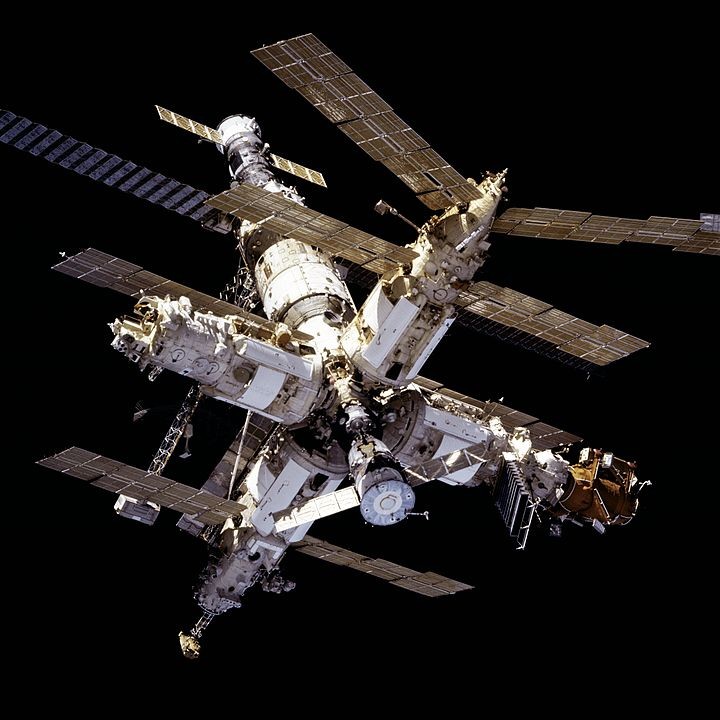On May 18, 1991, cosmonaut Sergei Krikalev left Earth for the Soviet space station Mir. While he was up there, more than 350 km above sea level, the country that sent him ceased to exist. He then became, within a few months, the "last Soviet citizen".
Freshly graduated in mechanical engineering in Leningrad (which would later become Saint Petersburg), Sergei Krikalev was recruited in 1981 by the RKK Energia company, which built the Soyuz vessels and launchers used by Soviet manned spaceflight. In 1985, he even participated in the rescue mission of the Salyut 7 station, then out of service due to a series of short circuits.
The same year, he was then selected as a cosmonaut before being assigned to the Buran program. In early 1988, he then began training for his first long-duration flight aboard the Mir space station. On November 26, 1988, he finally embarked on his first mission aboard the station , then began a second stay in April 1990 . This one, he doesn't know yet, won't go as planned at all.

Right off the bat, by the way. Indeed, as the capsule carrying Krikalev and two other crew members approaches Mir, the guidance system fails. Krikalev must therefore take control and manually stow the vessel without incident. Keeping a cool head, he successfully docks and the cosmonauts, along with Britain's first astronaut Helen Sharman, board.
For a time, the crew performs their usual duties, while below the Soviet Union begins to stretch further and crack . Krikalev is aware of this. News, even if it is rare, reaches the station. He has everything he needs on board. On the other hand, he begins to worry about his family and friends.
Soon, the space station will also find itself affected by the current policy 358 kilometers below. As Kazakhstan (among others) pushes for independence, Soviet President Mikhail Gorbachev announces that a Kazakh cosmonaut will replace Krikalev once his mission is complete to ease tensions. No one in Kazakhstan was then trained as a cosmonaut, which meant that Krikalev would have to stay in space a bit longer than expected .
From then on, the cosmonaut begins to worry about his own health. Little was known at the time about the effects of extended stays in space on the human body. However, Krikalev was aware of certain risks. "Will I have enough strength? Will I be able to recover from this longer stay and complete the program? Naturally, at some point, I had doubts “, he will explain next.
Then, in October, everyone leaves the station… except Krikalev. Nobody else had enough experience to stay on the structure and the Soviets couldn't afford to send another cosmonaut, so he stayed up there to "run the machine" .
Finally, on December 25, 1991, the Soviet Union collapsed . From then on, the lack of money prevented the sending of a possible mission aimed at freeing the cosmonaut from his duties. Admittedly, he can still integrate the capsule and return to Earth, but he is well aware that his departure would mark the end of the Mir station. So he stays.
Under the burden of hyperinflation, Russia then seeks money and sells seats on board the Soyuz to Western countries. Three months later, on March 25, 1992, after spending 311 consecutive days in space , Krikalev eventually returns to Earth. Germany had just paid Russia $24 million to send its flight engineer Klaus-Dietrich Flade aboard the station.
From his capsule on the ground, the authorities then extracted a man in a jumpsuit on which were still sewn the Soviet red flag and four large letters "CCCP" (USSR in Russian). The man was "white as an aspirin and sweaty like a piece of wet dough “, will write Western newspapers. The lands on which it has just landed are no longer Soviet, but Kazakh. His hometown is no longer called Leningrad, but Saint Petersburg. And his monthly salary of 600 rubles, previously inaccessible to most citizens of the country, has lost all its value.
When he left, he was a citizen of a state that no longer existed, earning him the nickname "the last Soviet citizen". He will finally obtain the title of hero of Russia and will return to space two years later, becoming the first Russian cosmonaut to perform a flight aboard an American shuttle. From 1998, he will also be the first man to land on board the new International Space Station .